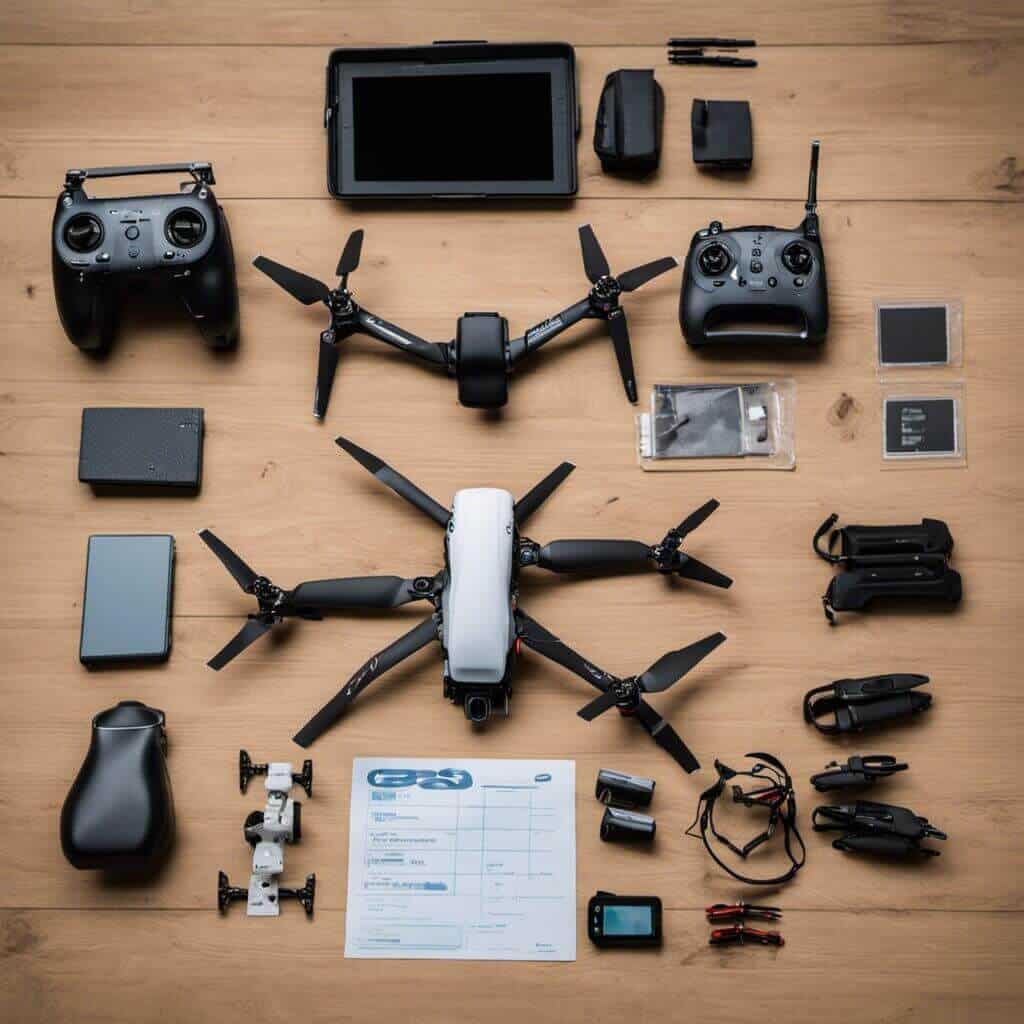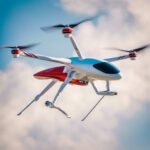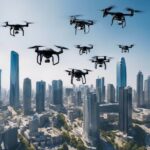Before taking your drone to the skies, it’s crucial to ensure that the setup is correct and that all necessary pre-flight checks are completed. Failure to do so could result in a crash or other accidents, causing damage to your drone or even injuring yourself or others.
Drone Pre-Flight Check
First and foremost, it’s essential to read the manufacturer’s instructions carefully. Each drone model has unique features and settings, which include understanding the drone’s flight modes, range, battery life, and other critical factors that could affect its performance. Once you know your drone’s capabilities well, you can move on to the pre-flight checklist.
Perform a drone pre-flight check before flying your drone to ensure its safety and good condition. Here are some essential items to include in your pre-flight checklist:
| BATTERY CHECK | Make sure your drone’s battery is fully charged and securely connected. Check the battery level indicator on your controller to ensure it shows a full charge. Check your secondary backup battery if you have one you take with you. |
| PROPELLER CHECK | Inspect the propellers for any damage, cracks, or chips. Make sure they are securely attached to the drone and rotate freely. If you notice any damage, replace the propellers before flying. |
| CAMERA CHECK | Check the camera lens for any streaks, dirt or smudges affecting the image quality. Test the camera by taking a few test shots or recording a short video. |
| SENSOR CHECK | Inspect the drone’s sensors and ensure they are clean and functioning correctly. |
| GPS CHECK | If your drone has GPS capabilities, check your controller’s signal strength indicator to ensure it shows a strong signal. If the GPS signal is weak, wait a few minutes to allow the drone to acquire a stronger signal. |
| CONTROLLER CHECK | Check your controller’s battery level and any backup battery you take, and ensure they are fully charged. Test the joysticks and buttons to ensure they do not stick and move easily. Make sure that the controller is synced with the drone. |
| WEATHER CHECK | Check the weather conditions before flying. Avoid flying in strong winds, rain, or snow. If weather warnings or advisories exist, postpone your flight until conditions improve. |
| FLIGHT AREA CHECK | When selecting a flight area, ensure it is free of any potential obstacles that could interfere with your drone’s flight path, including trees, power lines, buildings, and any other structures that could pose a risk. |
Safety Measures
Ensure you are familiar with the local regulations and laws regarding drone use in your area, establish a clear line of sight with your drone at all times and avoid flying in crowded or populated areas. Having a spotter with you to help keep an eye on your drone and alert you to potential hazards will also be helpful.
Setting a home point is crucial in ensuring a safe and successful flight, as this is the point where your drone will return if it loses its link with the remote controller or the battery is running low. Set the home point in an open, transparent area, away from potential obstacles or hazards.
When it comes to landing, do so slowly and steadily, maintaining control of the drone at all times. Avoid landing in areas with high winds or obstacles that may obstruct the landing.
Roles And Responsibilities Of Drone Pilot
As a drone pilot, you play an integral role in the operation of the drone. Your responsibilities include:
- Conducting a drone pre-flight check to ensure it is in good working condition.
- Planning the flight path and ensuring it is within the legal limits and does not pose a risk to people or property.
- Monitoring the drone’s flight and making adjustments as necessary to ensure that it stays on course and avoids obstacles.
- Following the applicable laws and regulations related to drone operation, including obtaining necessary permits and authorizations.
- Ensure you have the appropriate safety gear, such as goggles or a helmet, if necessary.
In addition to these responsibilities, you also need to have a good understanding of the capabilities and limitations of the drone. Our guide Introduction to Drones: Everything You Need to Know is an excellent resource to give you overall guidance.
- The drone’s flight capabilities include its maximum altitude, speed, and range.
- The drone’s camera and imaging capabilities include adjusting settings and capturing high-quality footage.
- Check the firmware version of your drone and controller. If you need to update the firmware, follow the instructions provided by DJI. Firmware updates are essential for safety and performance reasons.
- Customize your drone settings to fit your needs. You can adjust settings such as camera settings and flight modes.
- Ensure your drone’s memory card is empty and has enough space to store your footage. It’s also a good idea to bring extra memory cards with you, especially if you plan on capturing a lot of footage.
- Verify that the RTH (Return to Home) function is enabled.
- Check for any NOTAMs affecting your current or future flights and adjust your plans accordingly. NOTAMs are issued to alert pilots of potential hazards or restrictions in the airspace. In the United States, you can check for NOTAMs using various resources, such as the FAA’s NOTAM Search website or mobile apps. Additionally, you can subscribe to NOTAM alerts to receive notifications of any changes or updates.
Dealing with Drone Crashes and Payload
Drone crashes can happen for various reasons, such as pilot error, technical malfunctions, or environmental factors. Regardless of the cause, knowing how to handle a crash minimizes damage and ensures safety.
If your drone crashes, you should first turn off the motors and disconnect the battery to prevent any further damage or potential shock or fire hazards.
Next, assess the damage to the drone and any payload it was carrying. If the drone is severely damaged, it may need to be repaired or replaced.
When dealing with a crashed drone, follow relevant regulations and guidelines. For example, if the drone crashes near people or property, you may need to report the incident to local authorities. Additionally, if the drone was carrying sensitive or confidential data, you may need to take measures to secure the damaged data and prevent unauthorized access.
Post-Flight Review
After completing your drone flight, conduct a post-flight review to ensure everything went smoothly and identify issues that may need to be addressed.
Look for any damage or malfunctions. Inspect the propellers, motors, and other components to ensure everything works well, as you did pre-flight.
Review the footage or data collected during your flight and check for any anomalies or issues that may have affected the data quality. If you notice any problems, note them and consider adjusting your flight plan or equipment for future flights.
Final Thoughts
Flying a drone is an excellent leisure hobby, and by utilizing a drone pre-flight check, you can ensure that you are taking all the necessary steps to fly safely and avoid any potential accidents or mishaps. Going through the drone pre-flight check list before each flight can give you peace of mind and help you thoroughly enjoy flying your drone. So, next time you’re getting ready to take to the skies, remember to check off each item on your pre-flight checklist and confidently fly!
Frequently Asked Questions
What are the primary safety elements to be considered when flying a drone?
When flying a drone, it’s essential to consider the main safety elements, such as ensuring that your drone is in good condition, choosing a safe and open area to fly, and ensuring you have the necessary equipment.
What are the stages of a drone flight?
The stages of a drone flight typically include pre-flight preparation, takeoff, flight, landing and post-flight review.
What are the benefits of using a drone pre-flight checklist template?
Using a drone pre-flight checklist can help you save time and ensure you have covered all the necessary items before flying your drone. It can also help you avoid forgetting essential safety checks and ensure a consistent and reliable process for pre-flight preparation.






